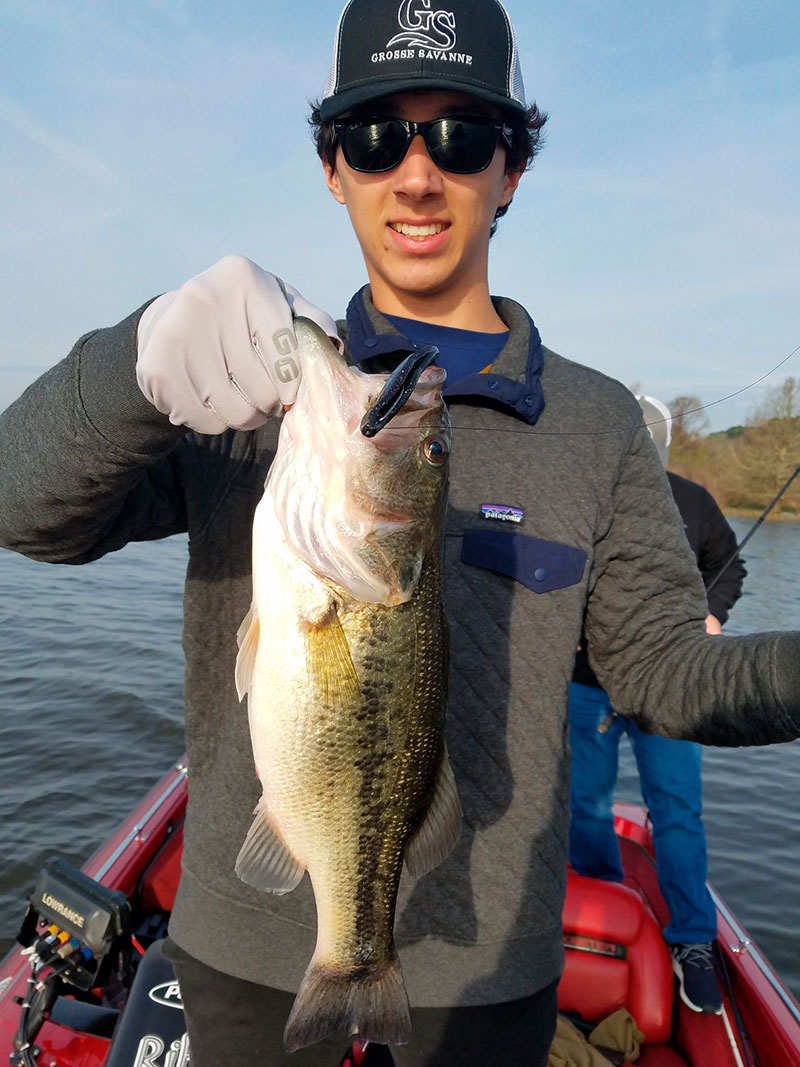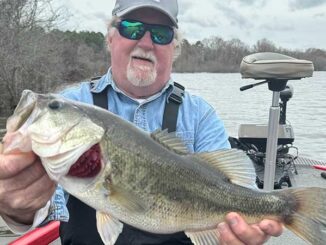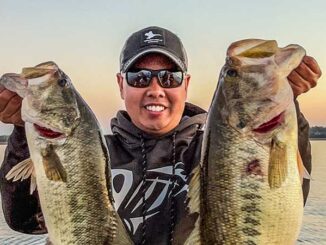
Despite some of those dark, gloomy, rainy mornings near the end of winter, anyone who holds a fishin’ rod targeting bass is wearing a big smile, like me.
We know when March rolls around there will be more water in the lake, enough water to give us a chance to go bushing, i.e., bush fishing for bass. Bass anglers had legitimate doubts that it would be a possibility throughout a low-water period since last mid-summer.
Late January’s heavy rains in the region changed that outlook but good to get the pool level up and it’s staying there, even with both generators running at the dam.
I believe we’re going to end up at full pool, 172.0, and so many bass anglers know what that means. Water will be up and into prime shoreline cover for the spring spawn. That’s all good, what everyone wanted, including myself. We needed the rain to fill the lake and we’ve got it now.
It could be a slugfest with some haymakers landing double-digit bass during the pre-spawn and spawn periods. Water temperature tends to trigger bass movement from deep to shallow. Much of the transition should center around the full moon on Feb. 24 and on March 25. With the three monthly moon cycles (February, March and April), waves of bass move up each time as spawners hit the beds as early as February and into late April, perhaps even early May.
Not all at once
Also, keep in mind bass don’t all spawn at the same time, especially on this huge lake. Generally, it starts on the northern end (Cow Bayou, Bison) and gradually moves to the midlake area (Pendleton Bridge) and then south from Indian Mounds to the dam. Traditionally, bass start squatting as water temps climb into the mid-60s to low 70s.
As for the “hawgs,” they’ll spawn whenever they’re biologically ready, even if it’s early February.
Through four decades on this lake, I’ll stick to moving baits such as red lipless crankbaits, shad-colored spinnerbaits and black/blue or shad-colored bladed jigs on flats and ridges near deep water, as well as creek points, to catch the migrating bass. But when water temps rise to those aforementioned levels, I’ll put the brakes on and tap the bass with soft plastics.
My top three soft plastics for targeting bass on or near beds are wacky- or Neko-rigged Senkos, Carolina-rigged Flukes and hollow, floating plastic frogs such as Stanley Top Toads. My most productive color over the past few years has been darker hues, mostly black, such as South African Specials. That holds its appearance even in the dingiest of water.
It’s also a time for deadsticking, parking whatever soft plastic you choose, but especially Carolina-rigged Flukes. I have had so much fun crankin’ in bass hooked on main lake ridges, once the outside water temps are similar to those inside creeks and bays, as bass move there to set up.
Plastic frogs? You betcha. When bass are locked down, they can be a game-changer if you slowly work them, then park ’em over a bass or dirt spot. And hold on after the hookset.
I’ve got a feeling there’s going to be some great bass fishin’ this spring,
I’ve been guiding on this lake most of my life and you’re welcome in my boat. March is a high-percentage month to catch a bragging-size bass. Give me a call at (936) 404-2688.


